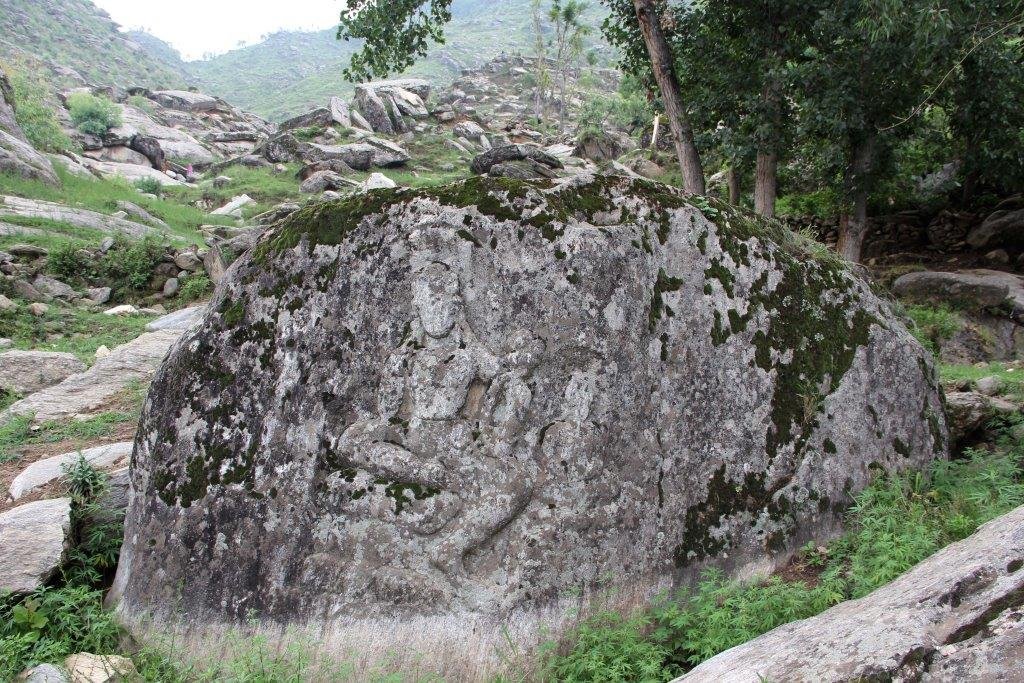By Joel Lee for Korea Herald
According to some historians, Korea’s Buddhism traces its roots to the Gandharan Civilization that thrived 2,000 years ago in the territories of today’s northern Pakistan and Afghanistan.
The Mahayana school of Korea’s Buddhism ― one of two main branches alongside the Hinayana school ― was introduced to the ancient Kingdom of Baekje (B.C. 18-A.D. 660) in 384 by monk Maranatha, native of Gandhara, the historical records say.
The triangular tract largely to the west of the Indus River and bounded to the north by the Hindukush Mountains includes the Peshawar Valley, Taxila, Swat, Dir, Buner and Bajaur. In ancient times, it was a religious melting pot of Buddhism, Sikhism, Jainism, Zoroastrianism and Hinduism, whose coexistence was encapsulated in coins, sculptures and paintings.
In an effort to showcase the region’s trove of treasures, the Pakistan Tourism Development Corporation and the Tourism Ministry will hold the International Celebrations on Gandhara Civilization and Buddha Heritage in March next year. Buddhist monks, scholars, followers and journalists from Korea, Japan, China, Myanmar, Nepal, Bhutan and Thailand will tour the holy sites in Taxila, Swat and Northern Areas.
To help promote the event in Korea, the Pakistani embassy organized a press conference on Nov. 9 that invited the country’s Buddhist communities, media and academia.
Monk Jukgyeong of the Bonginsa Temple in Namyangju City, Gyeonggi Province, who visited the region in October 2014, recalled his experience. “What I saw was the mankind’s first ‘fusion culture,’” he told the participants. “It was apparent that Gandhara combined different civilizations’ ideologies, cultures and arts to a great degree, as I saw in one artwork the Greek mythological hero Hercules being portrayed as one of the Four Heavenly Kings of Buddhism.”
Historians claim that the invasion of regional center Taxila by Macedonian King Alexander the Great in B.C. 326 led to the marriage of Hellenic and Buddhist cultures, which gave birth to the Greco-Buddhist art and the Mahayana Buddhist religion.
Under the Indo-Greeks and the Kushans, the hybridized culture connecting the Occident and the Orient flourished in Gandhara before spreading southward to India, according to researchers. The Greco-Buddhist art also advanced northward to Central Asia, strongly influencing the art of the Tarim Basin, before reaching China, Korea and Japan.
As an example, scholars claim UNESCO World Heritage List item Seokguram Grotto, which is part of Bulguksa Temple in Gyeongju, North Gyeongsang Province, is inspired by Gandharan art.
Some highlight similarities between Korea’s gilt-bronze “Pensive Maitreya Bodhisattva in Meditation” and bronze statue “The Thinker” by French sculptor Auguste Rodin (1840-1917). Both works show men immersed in contemplation with their right arms resting on their knees ― the posture that harks back to Gandhara’s Bodhisattva sculptures.
“Gandhara is a wellspring of research for soul-searching,” Jukgyeong said. “It is my hope that we see through these objects of art Buddha’s message: the love of humanity over divinity.”
Mahayana Buddhism is today the world’s largest denomination with more than half of practitioners in Korea, Japan, China, Vietnam, Tibet, Malaysia, Mongolia, Bangladesh and other countries. Meaning “the Great Vehicle,” the school’s central tenet aspires to carry humanity from disorientation to enlightenment through learning.
The region’s noted remnants include the first written manuscripts of Buddha’s teachings; Buddhist learning centers for Chinese pilgrims, monks and scholars; the Yogacara school, which trains the mind and consciousness; and the world’s oldest university in Taxila, dating back over 2,700 years.
To this day, timeworn stupas, shrines and courtyards stand to represent the holy land of Buddhism. In particular, the familiar image of Buddha ― with his gracious facial expression, hair tied in a bun and body wrapped in monastic robes ― is unearthed.
As an offshoot, the Bodhisattva sculpture, capturing Buddha’s exuberant youth before enlightenment, clads the holy figurine in lavish jewelry, headwear, loincloths and sandals, contrasted with the austere portraits of his post-metamorphosis state.
Professor Park Kyo-soon of Fatima Jinnah Women University in Rawalpindi, Pakistan, said: “Korea’s underlying heritage comes from Buddhism, which comes from Gandhara. In today’s localized world, Gandhara can be a lynchpin for globalizing our culture and Buddhism.”
Citing unmistakable resemblances in artifacts, dresses and folk melodies between Gandhara and Korea, Park stressed that the region could serve as an alternative channel for understanding Korea’s far-flung origins.
Pakistani Ambassador Zahid Nasrullah Khan said: “We want to build cultural bridges with the Korean people. We want to inform our Korean friends that we have similar cultures, and also thrive on our diversities.”
He added, “Seeing is believing. You must visit Pakistan to experience our warmth, friendliness and hospitality.”
Aside from the religious treasures, the region boasts a wealth of ecotourism assets, including countless mountain peaks over 7,000 meters, glaciers, valleys, lakes, deserts, rivers and beaches. Some 100 Korean climbers visit the rocky mountains of northern Pakistan annually, and more than 500 Korean businesspeople work in the country.





